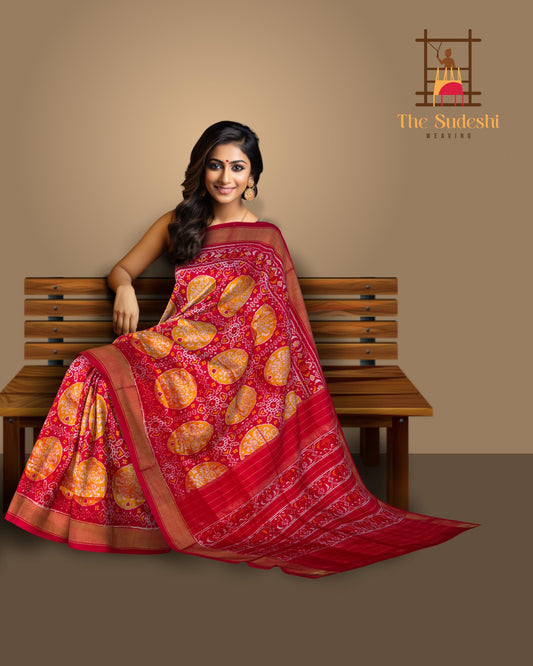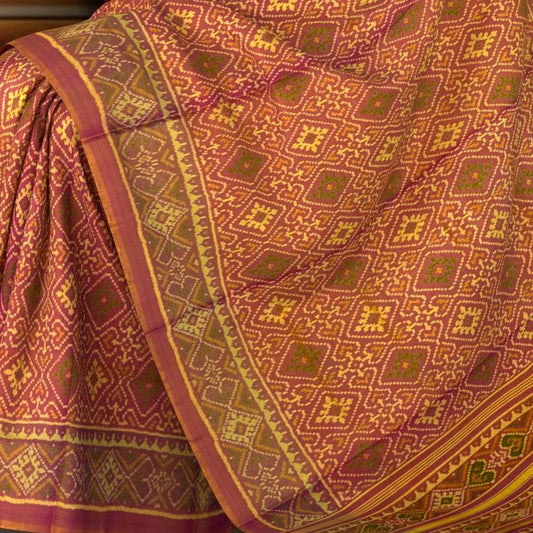How Kanjivaram Silk Sarees Have Transformed Indian Film Costumes

Kanjivaram silk sarees, with their rich heritage and exquisite craftsmanship, have left an indelible mark on the landscape of Indian cinema. Originating from the ancient city of Kanchipuram in Tamil Nadu, these sarees have adorned generations of women with their timeless elegance and cultural significance. Within the realm of Indian film, Kanjivaram silk sarees hold a place of reverence, not merely as garments, but as symbols of tradition, identity, and narrative depth. This blog explores the profound influence of Kanjivaram silk sarees on Indian film costumes, tracing their evolution and enduring impact.
Historical Significance of Kanjivaram Silk Sarees
The history of Kanjivaram silk sarees is steeped in tradition, dating back to the ancient Pallava dynasty. Crafted from pure mulberry silk and adorned with intricate zari work, these sarees are a testament to the skill and artistry of generations of weavers. Each saree is a labor of love, taking weeks or even months to create, with every thread woven with precision and care. The craftsmanship and quality of Kanjivaram silk sarees have earned them a reputation as some of the finest textiles in the world, cherished for their beauty and durability.
Kanjivaram Sarees in the Golden Age of Indian Cinema
The golden era of Indian cinema, spanning the 1950s to the 1970s, witnessed the rise of iconic films and legendary stars who left an indelible mark on the silver screen. Actresses such as Vyjayanthimala, Waheeda Rehman, and Rekha graced the celluloid draped in resplendent Kanjivaram silk sarees, epitomizing grace, elegance, and timeless beauty. These sarees became synonymous with the portrayal of strong, dignified women, adding depth and authenticity to cinematic narratives. From classic films like "Pakeezah" to epic dramas like "Mughal-e-Azam," Kanjivaram sarees became an integral part of Indian cinematic heritage, symbolizing tradition and cultural identity.
Modern Bollywood and the Evolution of Film Costumes
In contemporary Bollywood, the influence of Kanjivaram silk sarees continues to resonate, albeit with a modern twist. Renowned designers like Sabyasachi Mukherjee and Manish Malhotra have reimagined these traditional sarees, infusing them with contemporary aesthetics while preserving their timeless appeal. Films such as "Goliyon Ki Raasleela Ram-Leela" and "Padmaavat" have showcased the versatility of Kanjivaram sarees, blending tradition with modernity to create stunning visual spectacles that captivate audiences worldwide. The resurgence of interest in traditional textiles has led to a renewed appreciation for Kanjivaram silk sarees, both on and off the screen, reaffirming their status as cultural icons.
Symbolism of Kanjivaram Sarees in Film Narratives
Beyond their aesthetic appeal, Kanjivaram silk sarees carry profound symbolic significance in Indian film narratives. Often used as a visual cue to denote a character's cultural background, social status, or emotional journey, these sarees serve as powerful storytelling devices. In movies like "Sagara Sangamam" and "Bhool Bhulaiyaa," Kanjivaram sarees are imbued with deeper meaning, reflecting the complexities of human emotions and societal norms. Whether portraying a bride on her wedding day or a woman confronting societal expectations, the Kanjivaram saree becomes a symbol of strength, resilience, and cultural pride.
Influence on Fashion and Popular Culture
The influence of Kanjivaram silk sarees extends far beyond the realm of cinema, permeating mainstream fashion and popular culture. Celebrities and fashion icons around the world have embraced these sarees as symbols of elegance and sophistication, showcasing them at red carpet events, fashion shows, and cultural festivals. The timeless beauty and craftsmanship of Kanjivaram sarees have captured the imagination of designers and consumers alike, inspiring new interpretations and styles that honor the tradition while embracing modern trends. From handwoven masterpieces to contemporary couture, Kanjivaram silk sarees continue to captivate hearts and minds, transcending borders and generations.
Challenges and Preservation of the Kanjivaram Tradition
Despite their enduring popularity, the traditional art of Kanjivaram weaving faces numerous challenges in the modern era. Economic pressures, technological advancements, and changing consumer preferences pose threats to the survival of this ancient craft. However, concerted efforts by government agencies, non-profit organizations, and passionate artisans are underway to preserve and promote the legacy of Kanjivaram silk sarees. Initiatives such as skill development programs, marketing campaigns, and international collaborations aim to ensure the continued relevance and vitality of this timeless art form. By supporting sustainable practices and ethical sourcing, consumers can play a vital role in safeguarding the future of Kanjivaram weaving and preserving a cultural heritage that spans centuries.
Conclusion
In conclusion, the role of Kanjivaram silk sarees in Indian film costumes transcends mere fashion, embodying the essence of tradition, craftsmanship, and cultural identity. From the golden age of Indian cinema to the digital era of contemporary Bollywood, these sarees have remained steadfast symbols of grace, beauty, and resilience. As we celebrate the legacy of Kanjivaram silk sarees, let us honor the artisans whose skill and dedication have kept this ancient tradition alive for generations to come. By embracing the timeless elegance of Kanjivaram sarees, we pay homage to our heritage and ensure that their legacy continues to inspire and enchant future generations.







Leave a comment
Please note, comments need to be approved before they are published.